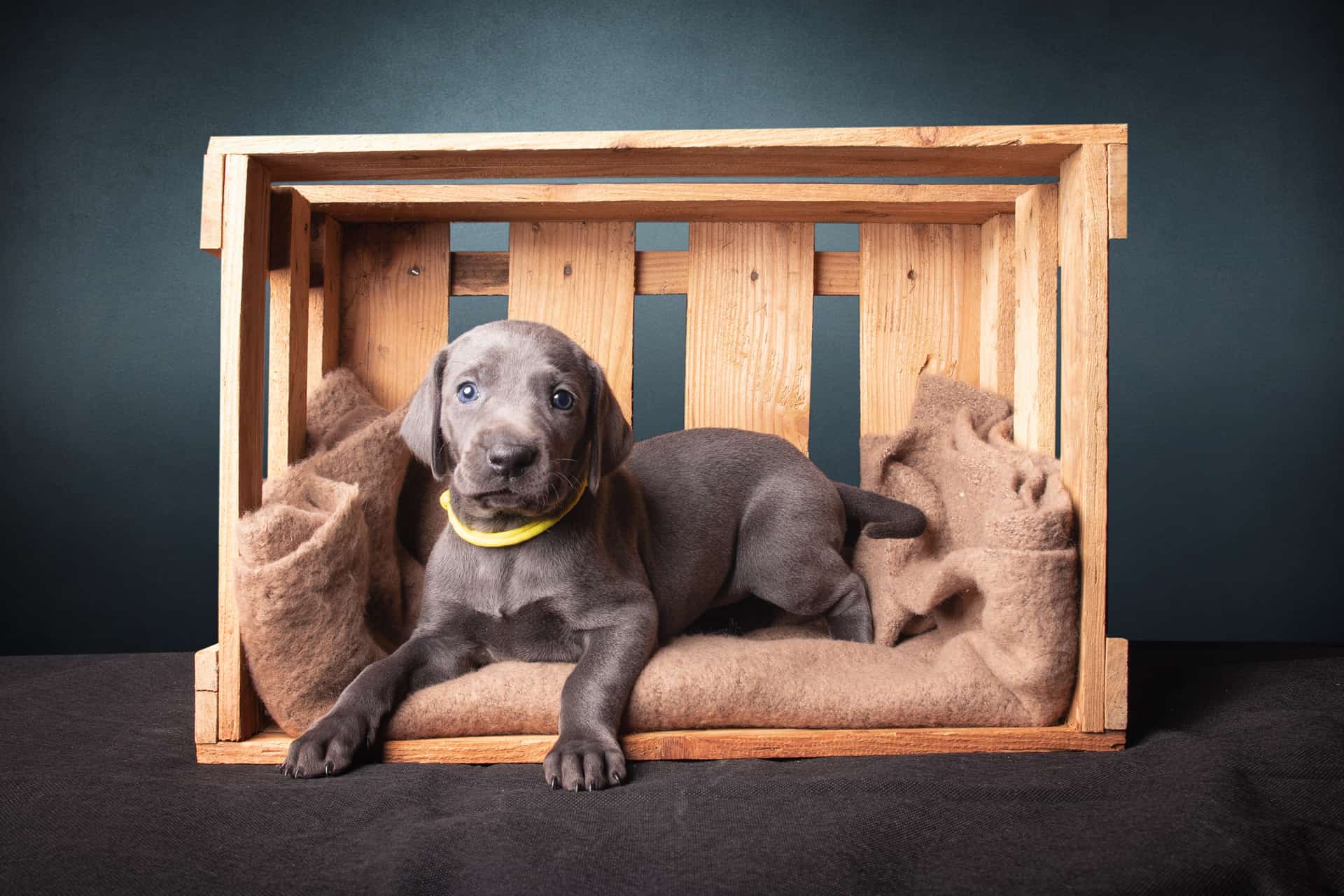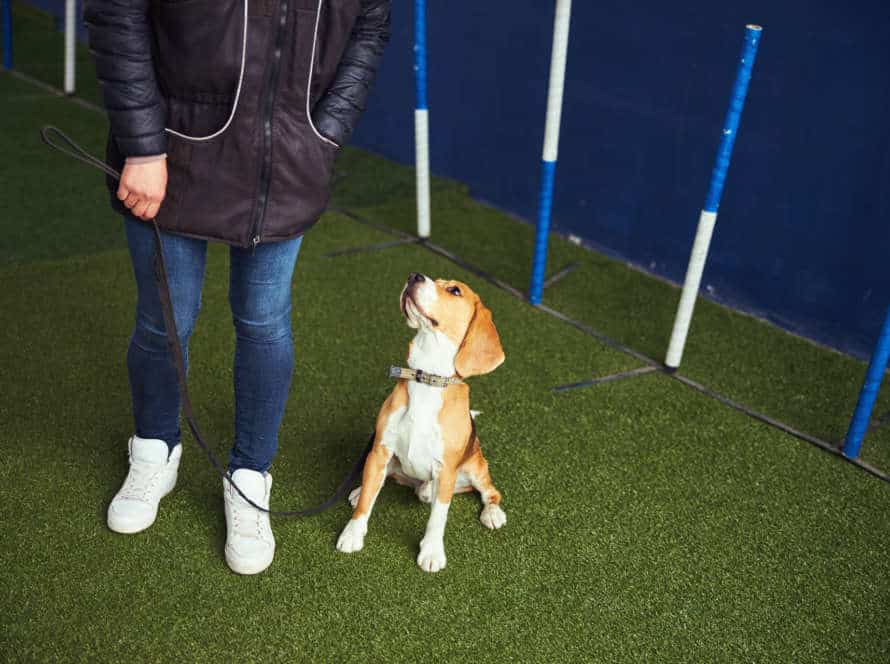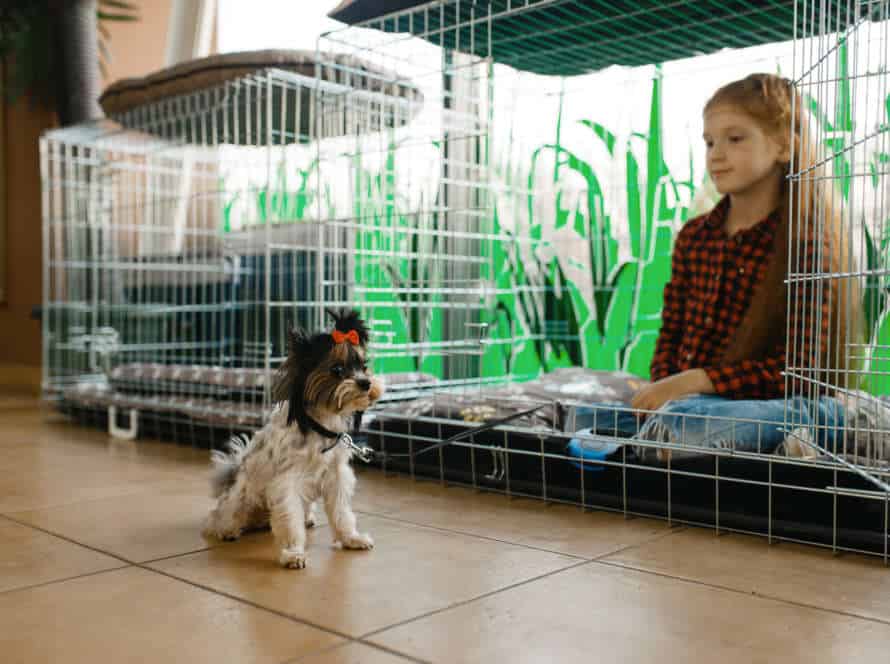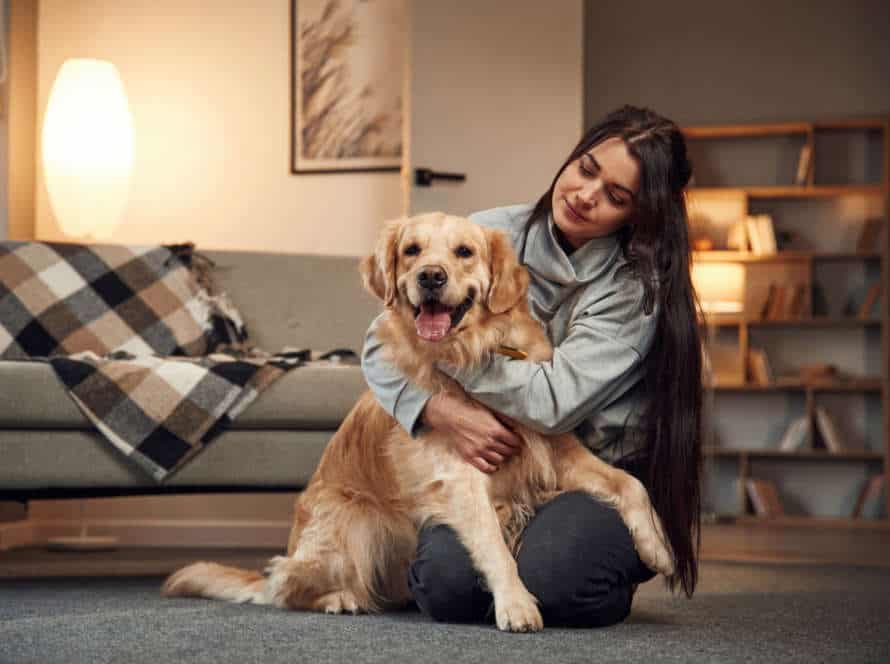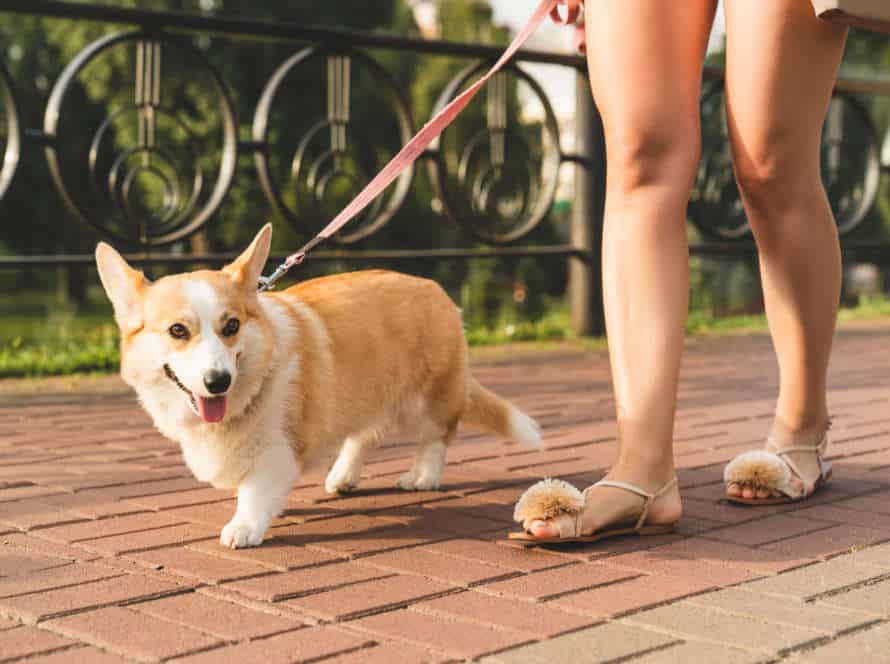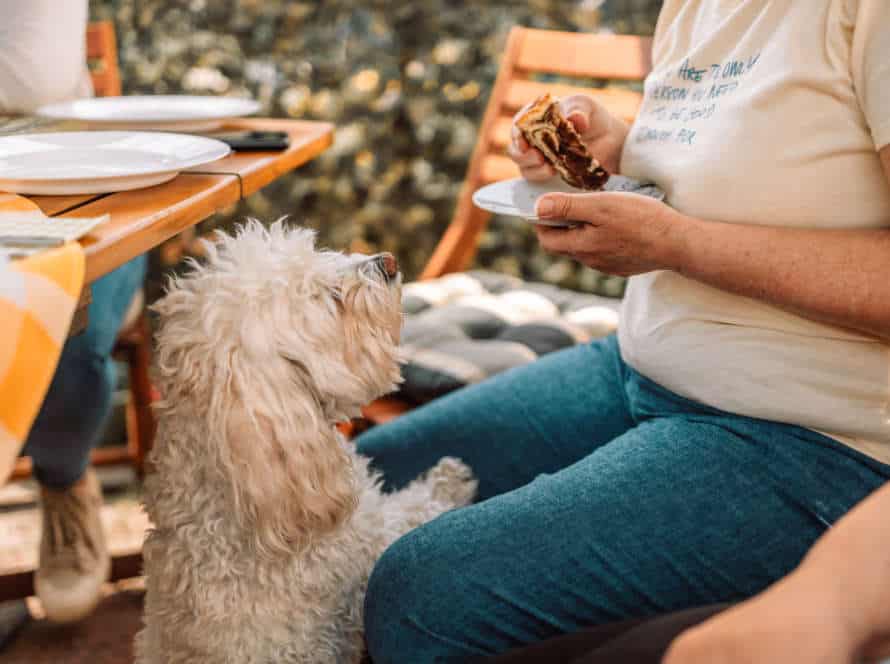What is crate training?
Crate training your pup? It involves confinement to a crate, and teaching them to hold their needs until they can go outside. The aim? To get them comfortable in the crate, and only use the bathroom in designated spots.
Now, how long does it take to crate train a puppy?
Understand the benefits of crate training
Crate training is a great way to help your pooch become a well-behaved, content pup. Here are some reasons why every dog parent should give it a go:
- Housebreaking: It can teach your doggo bladder control and stop any accidents in the house.
- Security: A crate offers a safe and cosy place for your pup, giving them warmth and comfort.
- Protection: When you’re away or busy, keeping your pup in a crate stops them from destroying things, eating something bad, or getting into dangerous locations at home.
- Travel-friendly: Crate-trained dogs find it easier to travel by car or plane, as their crate will make them feel at home.
- Health: Crate training lowers stress and anxiety levels, leading to better health and no more separation anxiety.
Remember: The duration of crate training depends on your pup’s age, breed, and personality, but if you’re patient it will be worth it! Pro Tip: Introduce your pup to the crate slowly and make sure it’s the right size for them. Plus, make sure they have positive experiences with it!
Determine if crate training is right for your dog
Crate training may not be for all dogs. Consider these factors to decide if it’s right for yours:
- Age: Puppies usually adjust well. Adult dogs take longer.
- Size: Get the correct size so your pup can move comfortably.
- Health: Arthritis and other conditions may be aggravated.
- Temperament: Mild dogs are more likely to accept it.
Crate training can take 1-2 months, with patience and persistence from the owner.
Key factors to consider when selecting a crate
Crate training means giving your pup a safe and comfy area when you’re not around or can’t watch them. When picking a crate, there are a few things to keep in mind:
- Size: The crate should be big enough for your dog to stand, turn and stretch out.
- Material: Wire, plastic and fabric crates exist. Think about your pup’s chewing and scratching habits when choosing.
- Accessibility: Some crates have one door, others have two or three. Pick one that’s easy for you and offers your pup multiple entry points.
- Comfort: Put a comfy mat or bed in the crate for your pup to lie on.
- Durability: Get a crate that’s strong enough to handle your pup’s wear and tear.
With the right crate, crate training can be a great experience for both you and your pup!
How long does crate training typically take?
Crate training for dogs is an efficient way to teach them house and obedience rules. It’s a slow process that needs patience from both the pet parent and the pup. But, it can be worth it in the end. So, how long does it take to crate train a dog? We’ll explore the answer in this article.
Factors that impact crate training duration
How long does crate training take? It depends on a few factors. Age, temperament, consistency, and approach all make a difference.
Young puppies may take longer than adults. Also, a pup’s personality matters. If the owner is not consistent, the process drags on.
The training technique is important too. Positive reinforcement and gradual exposure can make it go faster. In general, crate training usually takes two to four weeks. (Joke) Just remember – don’t expect it to be done in one night, unless that’s how long it takes your dog to learn!
The role of your dog’s age and breed in crate training
Crate training is an awesome way to housebreak your pup and help them get used to their own spot. But, the time it takes to train your furry friend can differ based on things like their age and breed.
Younger puppies are easier to teach than older ones, but all dogs can be taught with enough tenacity and patience. A pup may take four to six months to be fully housebroken, whereas an adult pup may take longer.
Certain breeds also take more or less time to crate train. Chihuahuas (smaller breeds) can be more difficult because they need more potty breaks, whereas larger breeds like golden retrievers may adjust faster.
It’s important to remember that crate training needs time, patience and consistency. Stick to a routine that works for your dog and don’t use the crate as punishment or to lock them up for long periods.
Common crate training setbacks and solutions
Crate training is great for your pup, but some problems may arise. Common issues are: whining and crying, accidents, and fear/anxiety.
Solutions:
- Make the crate a positive place with rewards
- Remove puppy from crate every few hours
- Add warm blankets, toys, and treats to reduce fear/anxiety
It takes 3-6 months for complete crate training. Patience is essential!
Steps to follow for successful crate training
Crate training your pet demands effort and commitment, but you’ll reap the rewards in the end. Teaching your pet that the crate is a safe, cozy spot is key. Here’s a step-by-step tutorial on crate training, to ensure success.
Introducing your dog to the crate
Introducing your pup to the crate can be tricky. But with patience and consistency, it can be an awesome way to keep them safe and comfy. Here are the steps for successful crate training:
- Place treats and toys in the crate, and leave the door open for your dog to explore.
- Use positive reinforcement like verbal praise, treats, and toys to get your dog to enter the crate.
- Close the door for short periods, with you nearby, then increase the time in the crate.
- Give meals and toys in the crate to make it a positive experience.
- Keep the crate clean and appropriately sized for your pup’s size and breed.
Pro tip: Crate training can take from a few days to multiple weeks. So stay patient and consistent. Eventually, your pup will love their crate and enjoy the time spent inside it!
Gradually increasing the amount of time in the crate
Crate training can benefit your pup by teaching them self-control, providing a safe space and managing behavior. To have a successful experience, follow these steps and remember: patience is essential.
- Introduce your dog to the crate in a positive way.
- Make the crate appealing with treats, toys and a nice bed.
- Reward and praise your pup when they enter the crate voluntarily.
- Start with just a few minutes and gradually increase time spent in the crate.
- Don’t let your dog out if they are whining or barking. Wait until they are calm, then let them out.
- Increase time spent in the crate as they become more comfortable.
- Be consistent and your pup will soon see the crate as their safe space.
Crate training can take weeks or months, so remain patient and take your time to make your pup feel at ease.
Creating positive associations with the crate
Creating associations with the crate that are positive is very important for successful crate training. Here’s what you do:
- Pick a crate size that is spacious enough for your pet to stand, turn around and lie down comfortably.
- Put a soft and cozy mat or blanket in the crate so your pet can be comfy. You can use an unwashed piece of clothing that has your smell to make your pet feel secure.
- Leave the door open and let your pet explore the crate on its own. Put treats or toys in the crate to get your pet to go in and stay inside.
- Gradually increase the time your pet spends in the crate and reward good behavior with treats and praise.
- Never use the crate as punishment and never force your pet to enter.
Remember, the time it takes to train your pet with the crate can be different based on its age, attitude and past experiences. Patience, determination and positive reinforcement can help your pet feel happy and comfortable in its crate.
Tips for making crate training easier
Crate training can be helpful in teaching your pet basic obedience and good potty habits. But, it isn’t always easy. Patience is necessary.
How long it takes?
Here are some tips to make the process faster and smoother. Know them!
Keeping your dog entertained while in the crate
Make crate trainin’ easier and keep yer pup from gettin’ bored by entertainin’ ’em in the crate! Here’re some great tips to make ’em happy:
- Give yer pup a toy or treat that’s safe to have in the crate.
- Cover the crate with a blanket or somethin’ to make it more cozy.
- Put the crate in the room where yer pup can still see and hear ya.
- Rotate the toys and treats to keep yer pup engaged.
- Give yer pup plenty of exercise and mental stimulation outside the crate.
Crate trainin’ takes patience, especially if yer pup’s new to it. Could take days or weeks to get yer pup comfy and relaxed. With consistency and positive reinforcement, yer pup’ll love the crate soon enough.
Ensuring the crate is comfortable for your dog
Crate training your pup can be made simpler by ensuring their crate is comfy. Here’s how to achieve that:
- Choose the right size crate – large enough for your doggo to stand, lie, and turn.
- Line it with a washable mat or bedding.
- Toss in a few of your pup’s favorite toys and treats, to make it inviting.
- Put the crate in a quiet, peaceful area of your home, away from noise and high-traffic.
- Let your pup explore and offer positive reinforcement for any signs of interest.
- Remember: Patience is the key! Make the crate a positive space and your pup will soon call it home.
Addressing any separation anxiety or boredom issues
Crate training is a popular and successful way to teach pups and pooches, but it can be difficult to fix issues with separation anxiety or boredom. Here are some tips to make it simpler:
- Gradually introduce your pup to the crate by using treats, toys, and positive reinforcement.
- Ensure the crate is comfy with a bed, towels, or blankets.
- Increase the time they spend in the crate, beginning with a few minutes and going up to longer periods.
- Connect the crate with great experiences, like playtime, meals, and treats.
- Deal with separation anxieties and boredom by giving them lots of exercise and mental stimulation away from the crate.
Crate training may take anywhere from days to weeks, dependent on the pup’s age, character, and past experiences. It’s vital to be patient and consistent with the training, and never use the crate as punishment. Eventually, your pup will love the crate and see it as a secure and comfortable spot.
Pro tip: Always monitor your pup during crate training and never leave them in the crate for longer than they can handle.
Mistakes to avoid while crate training
Crate training can be a great way to train and manage your furry friend. But, it requires patience and consistency. Mistakes can also be made while crate training. To ensure your pup’s safety and contentment, here are some mistakes to dodge:
Using the crate as a punishment
Making a crate a form of punishment is a common error pet owners make while crate training their pets. It looks like an efficient means to discipline your pet, however, it can actually have negative effects on the training. Dogs link the crate to safety and comfort. If they start to relate it to punishment, they could become anxious or scared of the crate. This could prompt behavior issues such as aggression, destructive actions, and separation anxiety.
During crate training, it’s essential to use positive reinforcement techniques like treats, praise, and toys to motivate your pet to use the crate willingly. Bear in mind, crate training takes time and persistence. Every dog is unique, some could take longer to adjust to the crate than others. Give your pet time and space to become familiar with the crate and always link the crate with positive experiences.
Pro tip- Never use the crate as a tool for punishment, always use positive reinforcement techniques to make the crate a secure and comfortable space for your pet.
Overusing the crate or leaving your dog crated for too long
Crate training your dog can be a great way to housebreak them, but be sure to avoid making common mistakes!
- Do not use the crate as punishment.
- Don’t leave your pup in the crate for more than a few hours at a time, except for bedtime.
- Size matters! Make sure the crate is big enough for them to stand, lie down, and turn around with ease.
- Pay attention to your pup’s distress signals. Crate training requires patience and consistency; it may take several weeks to several months to get your pup comfortable with the crate. Remember to reward good behavior!
Not properly preparing your dog for crate training
Incorrectly prepping for crate training can lead to frustration and failure. Here are some errors to dodge while crate training your furry companion:
- Don’t leave in the crate too long: Start with short periods and incrementally increase the time your dog is in the crate. Staying in it for several hours can cause anxiety and accidents.
- Create a positive link with the crate: Employ treats and compliments to form a positive association with the crate. Putting your dog in the crate as a punishment will just make them fear it.
- Choose the wrong size crate: The crate should be large enough for your dog to stand, turn, and lie down comfortably. Not so big that they use one side for the bathroom and the other for the bedroom.
- Be consistent: Utilize the crate regularly and evade confusing your dog by permitting them on the bed or sofa day after day and then suddenly locking them in the crate the next.
Remember that crate training needs patience and determination. With the correct prep and training, your pooch will love their crate and consider it a safe and comfortable area.
Frequently Asked Questions
Q: How long does crate training typically take?
A: Crate training duration can vary from dog to dog. Generally, it can take anywhere from a few days to several weeks.
Q: How often should I let my puppy out of the crate during training?
A: Puppies should be let out of the crate every 2-3 hours during the day and once during the night until they can hold their bladder for longer periods of time.
Q: Is crate training cruel?
A: No, crate training is not cruel. It can actually provide a safe and secure environment for your dog and can give them their own personal space.
Q: Should I leave my dog in the crate all day?
A: No, dogs should not be left in the crate all day. This can cause anxiety and other behavioral issues.
Q: What should I do if my dog cries or barks in the crate?
A: If your dog is crying or barking in the crate, do not let them out. Wait until they are calm, and then let them out. Consistently rewarding calm behavior can help reduce anxiety in the crate.
Q: How can I make the crate more comfortable for my dog?
A: You can make the crate more comfortable for your dog by adding a soft bed or blanket, and providing toys or chews to keep them occupied.

